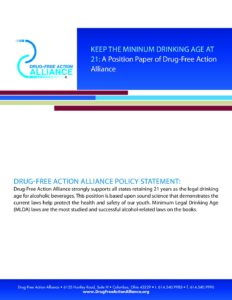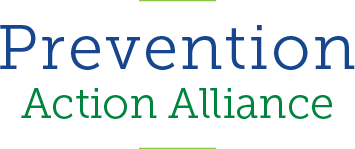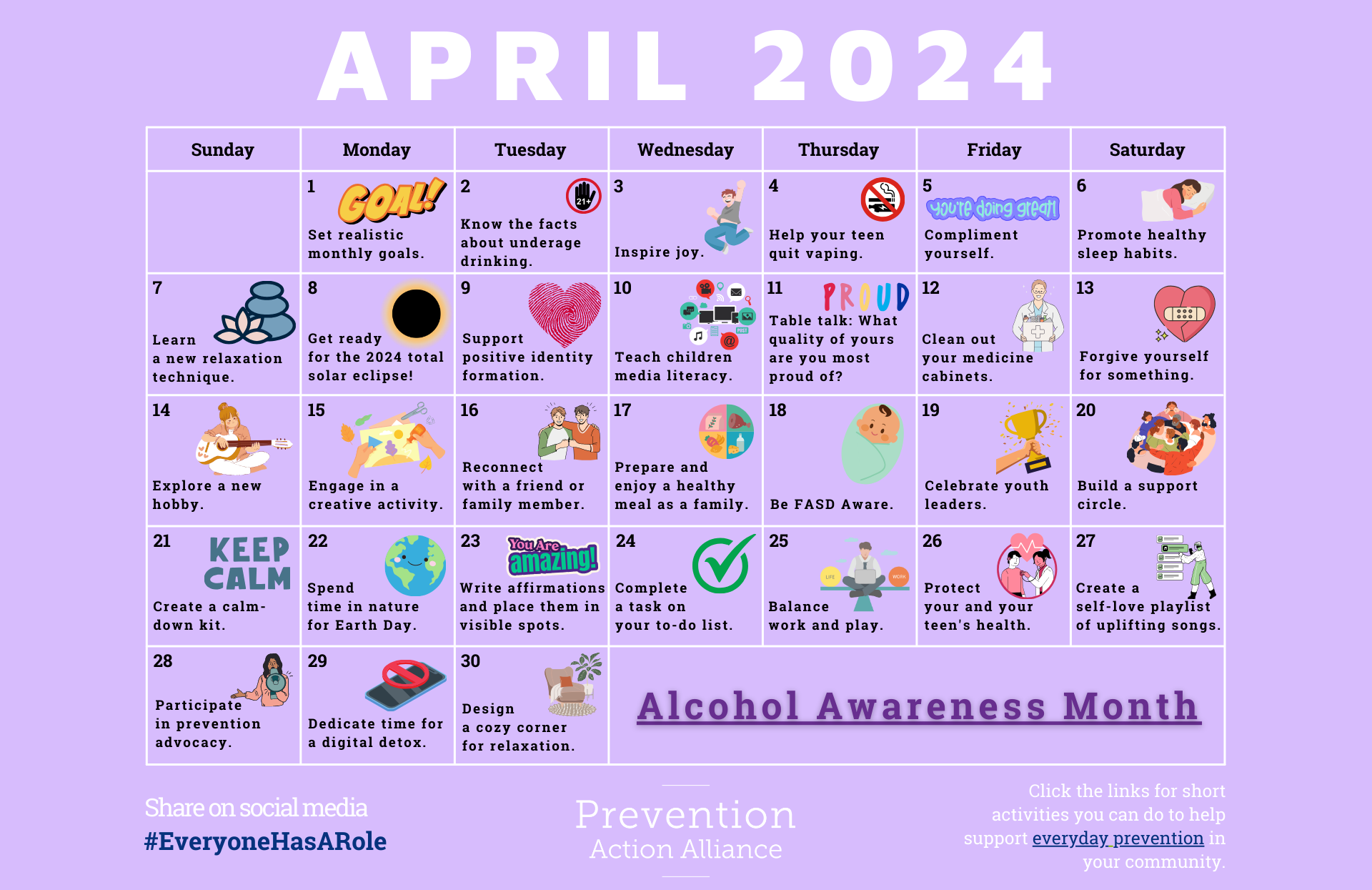
Prevention Action Alliance strongly supports all states retaining 21 years old as the legal drinking age for alcoholic beverages. This position is based on sound science that demonstrates the current laws help protect the health and safety of our youth. Minimum Legal Drinking Age (MLDA) laws are the most studied and successful alcohol-related laws on the books.
POLICY STATEMENT
Alcohol is zealously marketed, easily obtained, inexpensive and existing laws are not consistently enforced. Combine these factors with a widespread belief that alcohol is a benign drug, creates fun, is sexy and positively defines one’s social status, and it becomes a pervasive force in culture; one that is very seductive to youth. High-risk drinking and alcohol abuse are complex problems that no one strategy can remedy, but the higher MLDA is one effective approach.
A small number of vocal individuals are proposing that the drinking age be lowered from 21 to 18 based on a belief that abusive and high-risk drinking by youth in our society would be dramatically curtailed by simply adopting the lower drinking age and providing alcohol education.
The facts do not support their argument. The facts surrounding the consequences of lowering the drinking age in the U.S. during the 1970s, the recent lowering of the drinking age in New Zealand and the drinking patterns exhibited by European countries with already lower drinking ages prove the proposal to be ill-advised.
At least 50 peer-reviewed MLDA studies concur that a higher minimum legal drinking age is effective in preventing alcohol-related deaths and injuries among youth. When the MLDA has been lowered, injury and death rates increase, and when the MLDA is increased, death and injury rates decline. Additionally, evidence shows that while many youths under 21-years-old still consume alcohol, they drink less and experience fewer alcohol-related injuries and deaths when the legal age is 21. ii
Lowering the MLDA in the 1970s in the U.S
The National Minimum Drinking Age Act of 1984 was created to solve problems created by lowering the drinking age by various states in the 1970s. It encouraged a uniform MLDA for the nation. Forty years prior, most states voluntarily set 21 as the minimum drinking age, but in the early 1970s at the height of the Vietnam War, 29 states lowered the drinking age to address the concern of newly decreased military and voting ages, a criticism similarly expressed today.
In the states that reduced the MLDA, alcohol traffic fatalities and injuries increased rather dramatically and by 1983, sixteen of the twenty-nine states voluntarily raised their drinking age back to 21. iii This created a dangerous patchwork of states with different MLDA laws creating what was known as “blood borders.” Teens would drive across state lines, drink and then drive back home killing and injuring themselves or others. This carnage prompted the National Minimum Drinking Age Act of 1984.
Lowering of the MLDA in New Zealand
New Zealand offered additional insight when it lowered its minimum purchase age of alcohol from 20 to 18 in 1999. Researchers noted in 2006 that significantly more alcohol-involved crashes occurred among 15- to 19-year-olds than would have occurred had the purchase age not been reduced to 18 years.iv They also discovered after the change there were increased trips to emergency departments of intoxicated 15 to 19-year-oldsv indicating a trickle-down effect of the young teens getting alcohol from older friends. vi. Rates of drunk driving and disorderly conduct among this age group also increased in New Zealand.vii
The European MLDA model
The European model offers additional reasons for leaving the MLDA at 21. A recent study compared rates of alcohol consumption and alcohol-related problems in the United States with those in Europe and found that both rates and frequency of drinking among European youth are higher than in the United States.
European countries are now looking to the United States for research and experience regarding the age-21 policy.viii Compared to Americans, binge drinking rates among young people are higher in every European country except Turkey. In Britain, Denmark and Ireland, they are more than twice that of the U.S. level.ix
According to Stephen Rowen, Clinical Director of the Rutland Clinic in Dublin, alcoholism among young people is reaching epidemic levels in Ireland. A massive 50% increase in the alcohol consumption rate among teens is to blame .x Ian Gilmore, head of the Great Britain’s Royal College of Physicians, notes that alcohol-related deaths in the U.K. have doubled over the last 15 years. xi Additionally, in the United Kingdom one in seven people taken to the hospital for binge drinking last year were under the age 14. xii
Evidence strongly indicates the lower drinking age in Europe is not reducing high-risk drinking. In the United States, 21 MLDA has on the highways, clearly saved lives, reduced injuries and has decreased teen drinking levels.
New brain research tells us that reducing drinking levels in teens is imperative
Research reveals that adolescents are more vulnerable than adults to the effects of alcohol on learning and memory .xiii and it clearly indicates that delaying the use of alcohol reduces the risks of harming the developing brain, a developmental process that continues into the early 20s. xiv The hippocampus handles many types of memory and learning and is the part of the brain that is most damaged by teen drinking. Those who drink more and over longer periods of time have significantly smaller hippocampi by as much as 10 percent.xv
Research shows teen drinkers score worse than their non-drinking peers on vocabulary, visual-spatial, and memory tests, and are more likely to perform poorly in school as a whole.xvi Additionally, research indicates that they are more likely to have an increased risk of social problems, depression, suicidal thoughts, and violence. xvii
Deferred drinking also reduces the risks of developing alcohol dependence or abuse later in life.xviii Deferring the initiation of alcohol consumption is more challenging with a lower MLDA. There is ‘trickle-down’ effect when youth get alcohol; they often give it to even younger teens. If the drinking age is 18 and 19, then 17, 16 year-olds and even younger have easier access to alcohol.xix
Concluding Supposition
Alcohol is the number one youth drug problem in America and more young people die from alcohol-related causes than from all other illicit drugs combined.xx Five thousand people under age 21 will die from alcohol-related injuries each year and each day nearly 8,000 youth, ages 12 to 17, will drink alcohol for the first time.xxi
Reckless alcohol consumption by young people is a complex issue and no one policy can solve the problem.
Prevention science demonstrates a comprehensive, multi-layered approach is needed to prevent alcohol and other drug related problems. Communities must work vigorously to bolster the effectiveness of MLDA 21 by working towards stricter enforcement of existing policies and the addition of new supporting policies and efforts.
Please join Drug-Free Action Alliance and 77% of the public, as identified by a July 2007 Gallup poll, in keeping the minimum legal drinking age 21.
Works Cited
i. American Medical Association Office Alcohol/Drug Abuse
ii. Wagenaar, A. C. (1993). Minimum drinking age and alcohol availability to youth: Issues and research needs. In: Hilton, M.E., Bloss, G., eds. Economics and the Prevention of Alcohol-Related Problems. Bethesda, MD: National Institute on Alcohol Abuse and Alcoholism, 175.200. (NIAAA Research Monograph No. 25, NIH Publication No. 93-3513).
iii. Mothers Against Drunk Driving (MADD). (2004, Spring). .21. turns 20. DRIVEN Magazine. Retrieved May 30, 2007, from http://www.madd.org/stats/8916
iv. National Highway Traffic Safety Administration (NHTSA). (2001). Alcohol and highway safety 2001: A review of the state of knowledge. Retrieved June 12, 2007, from http://www.nhtsa.dot.gov/people/injury/research/AlcoholHighway
v. Everitt, R., & Jones, P. (2002). Changing the minimum legal drinking age its effect on a central city emergency department. The New Zealand Medical Journal, 115(1146), 9.11.
vi. Study Published January 2006 edition of the Journal of American Public Health. Authored by Kypros Kypri, Robert B. Voas, John D. Langley, Shawn C.R. Stephenson, Dorothy J. Begg, A. Scott Tippetts,and Gabrielle S. Davie
vii. Join Together. (2007). Alcohol crashes rose when N.Z. drinking age fell, study says. Retrieved May 26,2007, from http://www.jointogether.org/news/research/summaries/2007/alcohol-crashes-rose-when.html
viii. Wagenaar, A.C. & Toomey, T.L. (2002). Effects of Minimum Drinking Age Laws: Review and Analyses of the Literature from 1960 to 2000. Journal of Studies on Alcohol. Supplement 14, 206-225.
ix. Robert Voas, “There is no benefit to lowering the drinking age’. The Christian Science Monitor from the January 12, 2006 edition.
x. Independent National News, 8/31/2007
xi. Join Together, “Total Ad Ban Needed to Fight U.K. Alcohol Problems, Expert Says.” February 26, 2007
xii. Reported in the Daily Mail – National Health Service statistics. October 8, 2007
xiii. White, A (2001). Duke University Medical Center, Durham, NC. Alcohol and adolescent brain development
xiv. Little, P.J., et al. “Differential Effects of Ethanol in Adolescent and Adult Rats.” Alcoholism: Clinical and Experimental Research 20(8):1346 – 1351, November 1996.
xv. American Medical Association (AMA). (2004). Harmful consequences of alcohol use on the brains of children, adolescents, and college students. Retrieved April 5, 2007, from http://www.amaassn.org/ama/pub/category/9416.html
xvi. Underage Drinkers at Higher Risk of Brain Damage,” American Medical Association, 2003
xvii. American Medical Association (AMA) (2002). Fact Sheet from an AMA Report on Alcohol’s Adverse Effects on the Brains of Children, Adolescents and College Students. Available online: http://www.alcoholpolicysolutions.net/pdf/brain3.pdf
xviii. Grant, B.F. & Dawson, D.A. (1997), Age of onset of alcohol use and its association with DSM-IV alcohol abuse and dependence. Results from the national longitudinal alcohol epidemiologic survey. Journal of Substance Abuse. 9:103-110.
xix. Wagenaar, A. C., Toomey, T. L. (2002). Effects of minimum drinking age laws: Review and analyses of the literature from 1960 to 2000. Journal of Studies on Alcohol, Supplement 14, 206-225.
xx. National Research Council and Institute of Medicine (2004). Reducing Underage Drinking: A Collective Responsibility. Committee on Developing a Strategy to Reduce and Prevent Underage Drinking, Richard J. Bonnie and Mary Ellen O’Connell, Editors. Board on Children, Youth, and Families, Division of Behavioral and Social Sciences and Education. Washington, DC: The National Academies Press
xxi. Substance Abuse and Mental Health Services Administration, Office of Applied Studies, “A Day in the Life of American Adolescents: Substance Use Facts,” The OAS Report, October 18, 2007.


